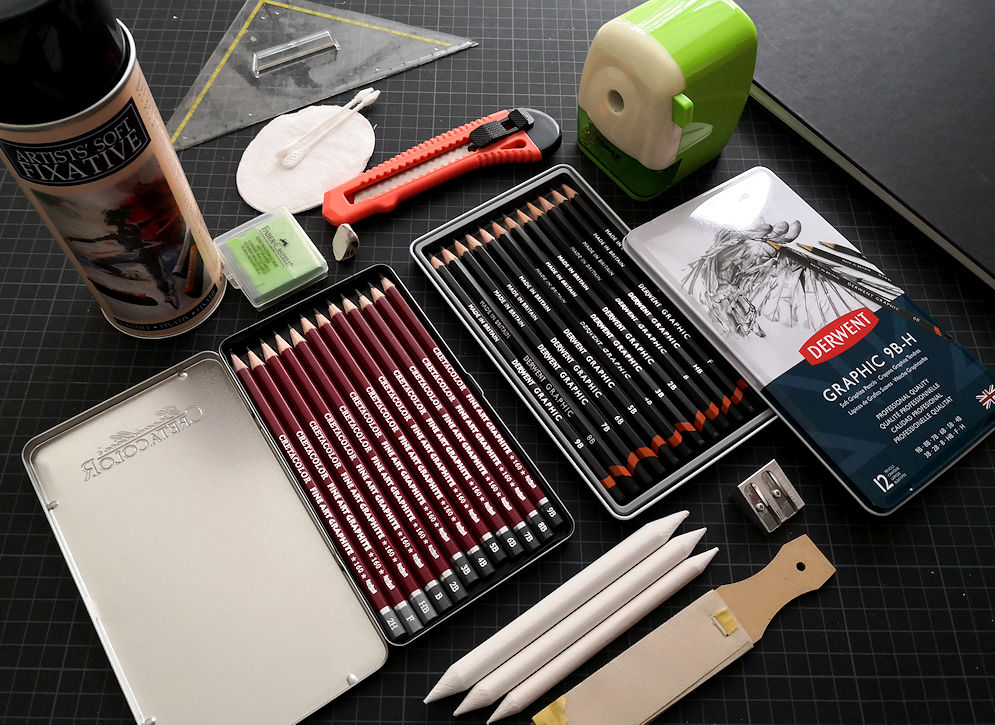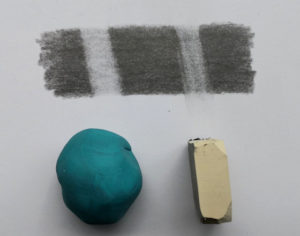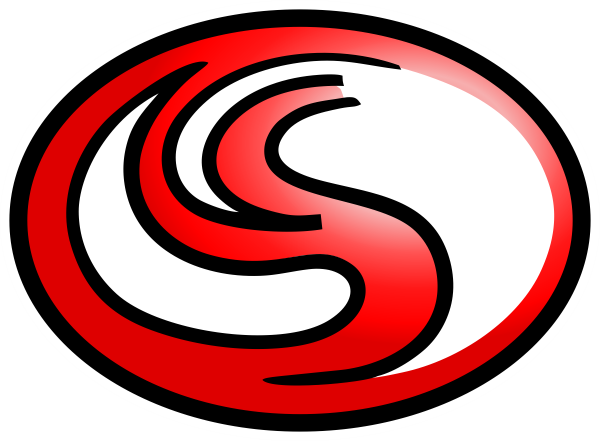01 Nov Drawing Material for realistic pencil drawings
At first glance it seems logical what materials are needed for drawing – pencils and paper, of course. But if you get more involved, you quickly realize that not every pencil is the same and that various tools like blending stumps or cotton pads are almost indispensable if you want to achieve a nice, realistic result.
So, here is the drawing material I use for my realistic drawings:

Pencils:
Graphite pencils grades range from 9B (blackness = soft) to 9H (hardness = light). My standard pencil for sketching is 2B and partly 3B, for dark areas 4B to 9b and 2H to B for lighter areas.
You can also try out mechanical pencils. They come in handy if you want to draw small details.

Paper:
For sketching and practicing a good sketchbook with durable paper and a decent thickness will do. A personal favorite is e.g. Artway Studio – Sketchbook (170 g / m²).
For realistic drawings I usually use strong Bristol board or similar heavy paper that is smooth but has still some tooth. For very large drawings watercolor paper like Fabriano Artistico (hot press) can be used.
The paper shouldn’t be too rough, but it should have enough texture so that the drawing lasts well and dark areas can be worked out well.
Finding the best paper is an art in itself… It’s best to try out different types of paper and then choose.

Blending stumps, cotton pads and swabs:
With blending stumps you can blend small areas with precision. For larger areas cotton swabs and pads are helpful to create clean transitions and blend them smoothly. Cotton swabs are now also available in the environmentally friendly version made of wood …
Kneaded eraser and normal eraser:
are both indispensable. I usually use a kneaded eraser. It does not smudge (see below) does not damage the paper, can be shaped by hand and leaves no particles behind.
In certain cases, however, a normal eraser can be helpful, e.g. to create highlights (hair) or thin lines.

Fixative:
I spray all my drawings with a fixative. It provides a protective layer, preserves the art and prevents smudging.
Sharpener:
A good sharpener saves a lot of nerves. If pencils break often, it may be due to a dull sharpener. I use a manual pencil sharpener but also a handheld metal sharpener can perform well.
Additional tools:
Sandpaper (to clean blending stumps), a utility knife to cut paper and rulers are also useful.
In general, I advise you to try out different products and to decide for yourself which material works best for you.
